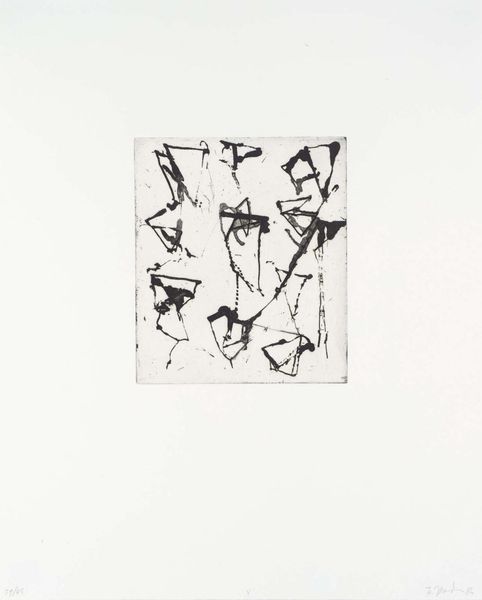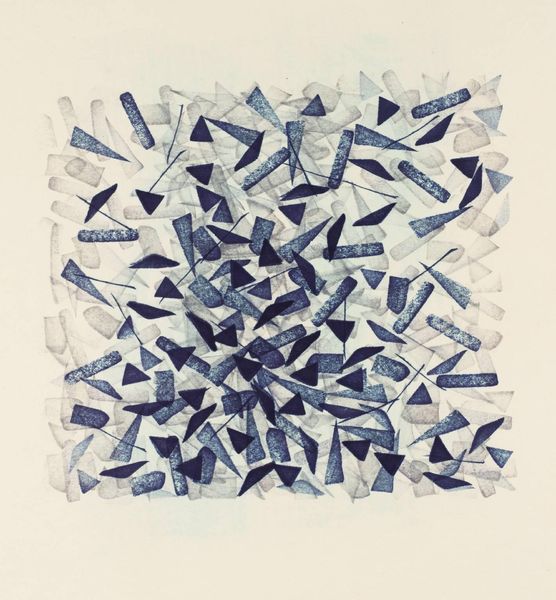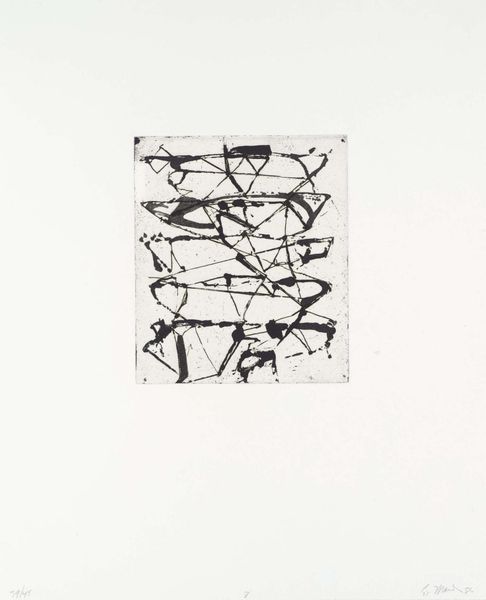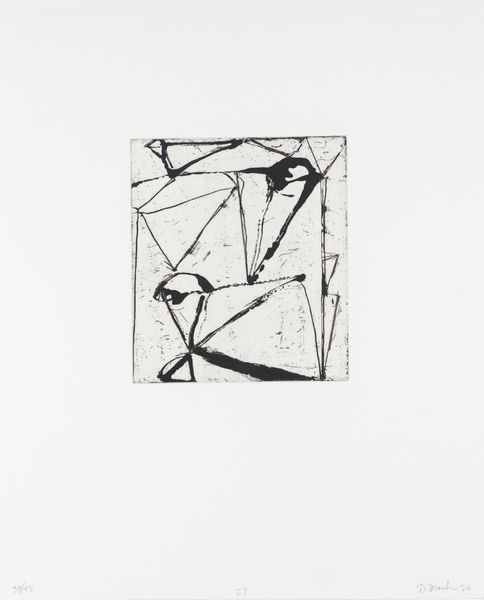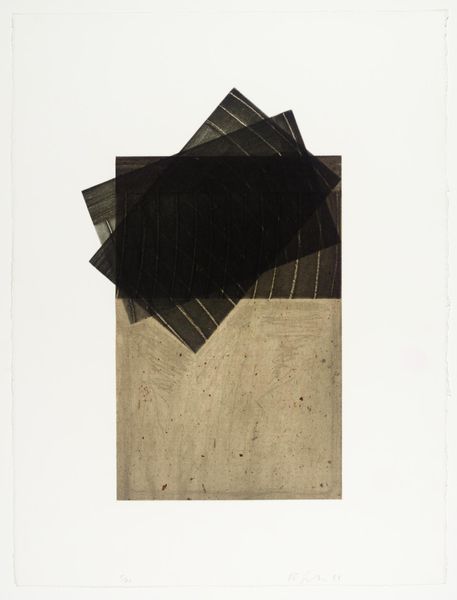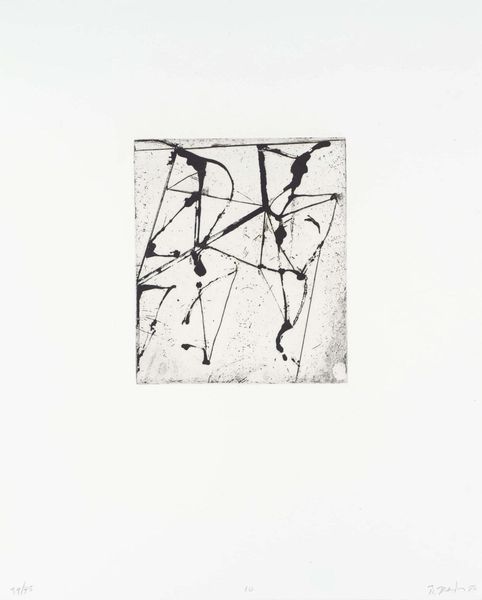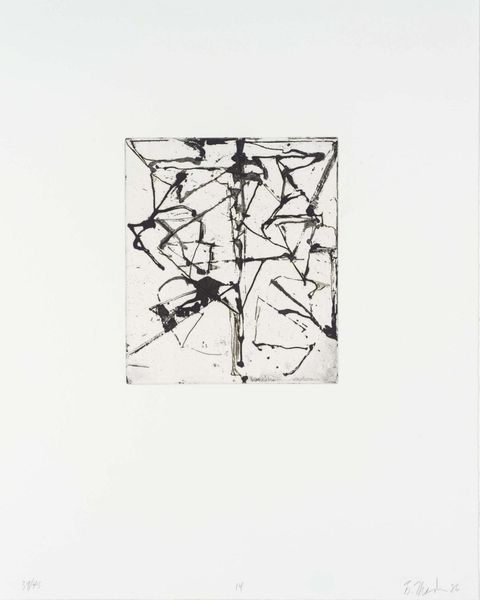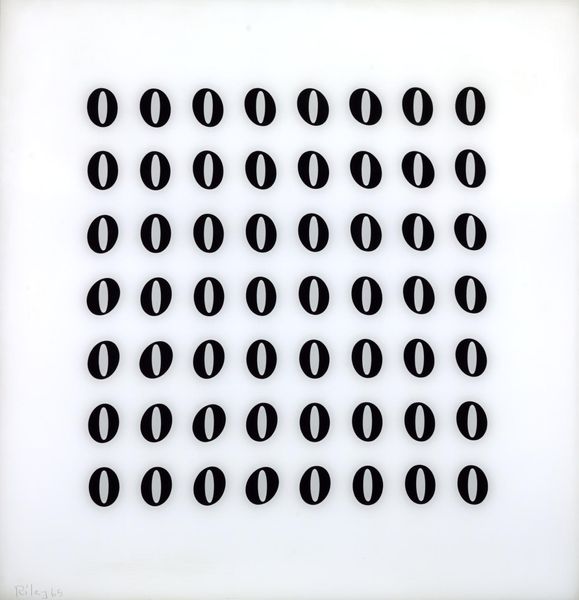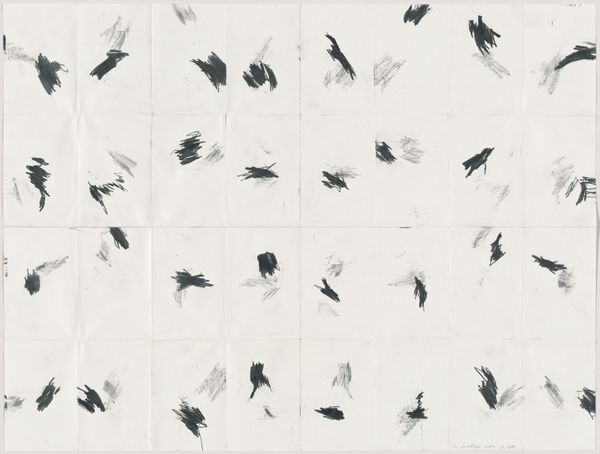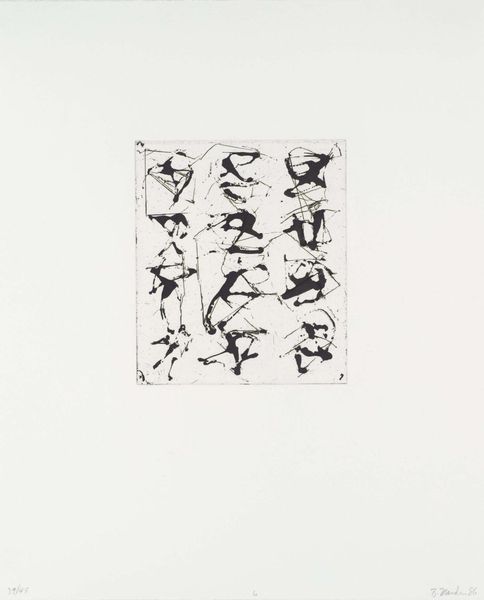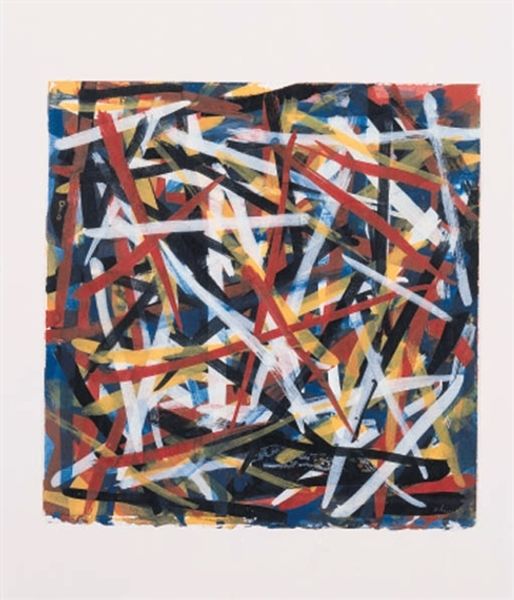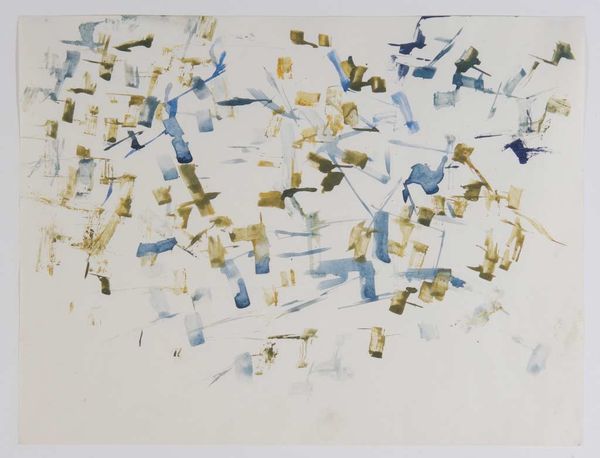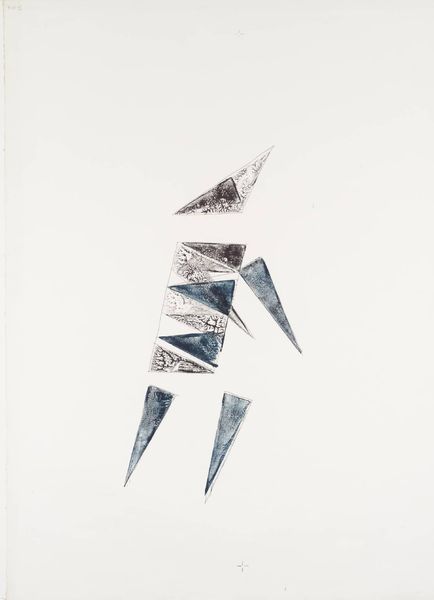
Dimensions: object:1575 x 1600 x 505
Copyright: © ADAGP, Paris and DACS, London 2014 | CC-BY-NC-ND 4.0 DEED, Photo: Tate
Curator: It almost disappears into the white background, yet there's a subtle energy. Editor: Indeed. What we're seeing is Julio Le Parc's "Continual Mobile, Continual Light," part of the Tate Collection. Le Parc was deeply interested in challenging artistic norms through viewer interaction. Curator: I see the interplay of light and shadow created by these suspended squares, their placement feels almost mathematically precise. What materials did Le Parc employ? Editor: The artwork uses stainless steel and nylon thread. This emphasis on industrial materials aligns with Le Parc's ambition to democratize art, moving it away from traditional, exclusive media. Curator: So, the materials themselves carry a message, a break from the preciousness often associated with art objects. The structure here is creating an ever-changing experience. Editor: Precisely! Le Parc’s kinetic art invites us to consider the means through which the artistic process can be democratized, embracing simplicity in form to create a powerful, collective viewing experience.
Comments
tate 6 months ago
⋮
http://www.tate.org.uk/art/artworks/le-parc-continual-mobile-continual-light-t00678
Join the conversation
Join millions of artists and users on Artera today and experience the ultimate creative platform.
tate 6 months ago
⋮
After moving from Buenos Aires to Paris at the end of 1958, Le Parc began to paint pictures with simple geometrical forms because he considered them more neutral than irregular forms, therefore closer to his aim of removing all trace of the artist’s touch and of subjective points of view. He soon started experimenting with movement and chance by suspending plastic or metal shapes on thin nylon threads in front of a contrasting background. Le Parc was a founding member of GRAV, the Groupe de Recherche d’Art Visuel (Visual art research group) in 1960. Gallery label, October 2016
